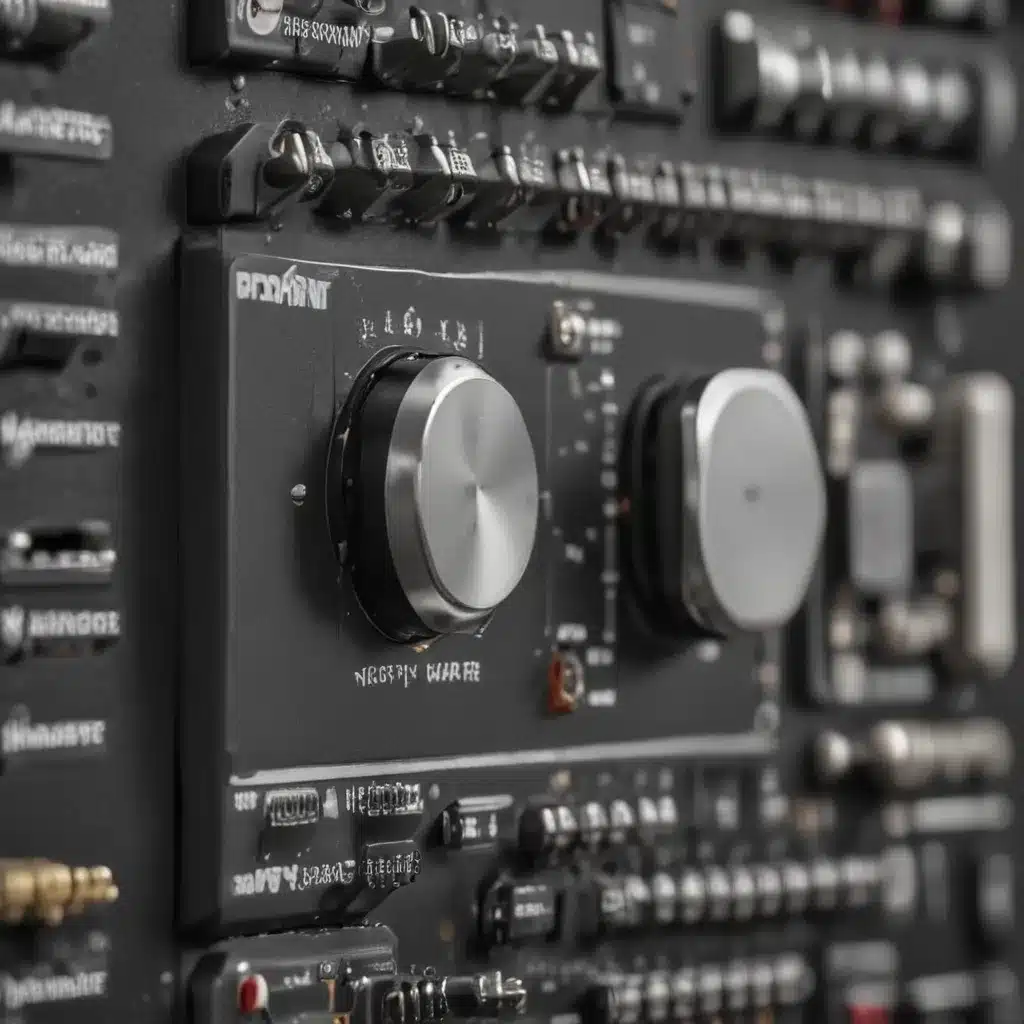Uncovering the Secret Symphonies of Your PC
Have you ever found yourself sitting at your desk, minding your own business, when suddenly your computer erupts into a symphony of clicks, whirs, and rattles that would make a jackhammer blush? If so, you’re not alone. Noisy hardware is a common issue that can drive even the most patient tech enthusiast up the wall.
As the owner of a UK-based computer repair service, I’ve seen it all – from fans that sound like they’re auditioning for a role in a horror movie, to hard drives that grind away like they’re trying to tunnel to the center of the earth. But don’t worry, my friends, for I have delved deep into the mysterious world of noisy hardware and emerged with a wealth of knowledge to share.
Identifying the Culprit
The first step in taming the cacophony emanating from your machine is to pinpoint the source of the noise. Is it coming from the fans? The hard drive? The graphics card? The power supply? [1] To do this, you’ll need to play a little game of detective.
Start by powering on your computer and listening carefully. Move your ear close to each component, one by one, and try to isolate the offending noise. If you’re having trouble, you can even use a stethoscope or a piece of tubing to amplify the sound and make it easier to pinpoint. [2]
Once you’ve identified the source of the noise, it’s time to dig a little deeper. What kind of sound is it? Is it a high-pitched whine, a low-frequency rumble, or a rattling that makes you want to throw your computer out the window? The type of noise can provide valuable clues about the underlying issue.
Tackling the Troublesome Trio
In my experience, the three most common culprits behind noisy hardware are fans, hard drives, and bearings. Let’s take a closer look at each one:
Fans
Fans are the unsung heroes of your computer, quietly keeping everything cool and running smoothly. But when they start to fail, they can become a veritable symphony of annoyance. [3] The most common fan-related issues are:
- Bearing failure: Over time, the bearings that allow the fan to spin smoothly can wear out, leading to a grinding or whining noise.
- Dust buildup: If the fan blades become coated in dust and debris, it can cause them to rub against the housing, creating a rattling or clicking sound.
- Loose mounting: If the fan is not properly secured, it can vibrate and produce a buzzing or rattling noise.
Hard Drives
Hard drives are another common source of noise, and the problems can range from the subtle to the downright deafening. [4] Some of the most common hard drive-related issues are:
- Bearing failure: Just like with fans, the bearings that allow the hard drive platters to spin can wear out, leading to a grinding or whining noise.
- Platter imbalance: If the platters inside the drive become unbalanced, it can cause a rhythmic thumping or clicking sound.
- Head arm issues: The mechanical arm that moves the read/write heads can sometimes become stuck or misaligned, leading to a clicking or scraping noise.
Bearings
Bearings are the unsung heroes of many computer components, allowing everything from fans to printer rollers to move smoothly and quietly. But when they start to fail, they can become the source of a wide range of noises. [5] Some common bearing-related issues include:
- Wear and tear: Over time, the balls or races inside the bearing can become worn down, leading to a grinding or rumbling sound.
- Lubrication failure: If the bearing’s lubricant dries up or becomes contaminated, it can cause a high-pitched squeal or a low-frequency rumble.
- Misalignment: If the bearing is not properly installed or becomes misaligned, it can produce a variety of noises, from rattling to clicking.
Quieting the Cacophony
Now that you’ve identified the source of the noise, it’s time to take action. Depending on the issue, there are a few different approaches you can take:
- Cleaning and Lubrication: For fan and bearing-related issues, a thorough cleaning and re-lubrication can often do the trick. [6] Just be sure to use the right type of lubricant and follow the manufacturer’s instructions.
- Replacement: If the issue is more severe, such as a bearing or hard drive failure, you may need to replace the component entirely. [7] This can be a bit more involved, but with the right tools and a little patience, it’s a task even a novice can tackle.
- Isolation: In some cases, the noise may be caused by the component vibrating against the chassis or other nearby components. In these cases, you can try isolating the offending component using rubber grommets or other dampening materials.
Remember, the key to quieting the cacophony is to be persistent and methodical. Don’t be afraid to try a few different approaches until you find the one that works best for your particular setup. With a little elbow grease and a lot of patience, you can transform your once-noisy computer into a veritable temple of tranquility.
So there you have it, my friends – the secrets to pinpointing and conquering the noisy hardware that lurks within your beloved machine. Now go forth, wield your tools with confidence, and bask in the sweet, sweet silence of a well-tuned computer. Happy hunting!













